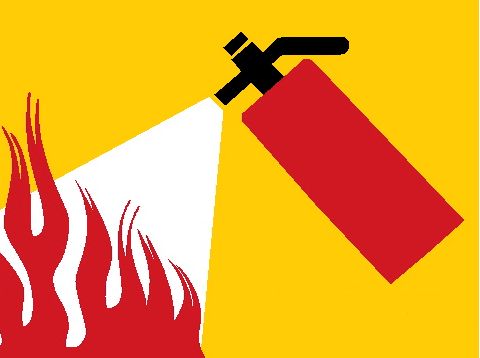Teresa Hunsaker, USU Extension, Weber County Family and Consumer Science Educator talks about a change checklist on Studio 5.
_________________________________________________
ITEMS TO BE CHANGED: Every 6 months to a year:
⌘ Check, change and replace furnace filters–filters become clogged with dirt and other particles, reducing the energy efficiency of your heating and cooling systems.
⌘ Check and clean the dryer vent.
⌘ Check and clean the stove vent—or replace it.
⌘ Check, change, and replace batteries on smoke detectors/alarms and carbon monoxide detectors–Constant stress on a smoke detector’s sensors from particles in the air — everything from cigarette smoke to pet dander to pollen — render it unreliable, says the U.S. Fire Administration. Its ability to sense smoke deteriorates. This could be potentially devastating in the event of a fire and it not going off.
⌘ Change the water in water heater—flushing out the water heater keeps the hard water minerals from building up and thus extends the life of the water heater.
⌘ Toothbrushes–toothbrush bristles frayed from use remove plaque less effectively than those of a new brush, according to the American Dental Association. Swapping out your brush will also limit exposure to bacteria that build up on the bristles.
⌘ Walking/running shoes—foam-like material in the midsole of the shoe stops bouncing back. You lose the shock-absorbing capacity– that can lead to heel and arch pain, or even stress fractures. Judge how much life is left in your shoes by the way they feel.
⌘ Change your settings on timed lights and electric blankets.
⌘ Change the temperature on your water heater—in warm summer months you don’t need to have as hot of water for bathing.
⌘ Change out sponges for cleaning.
⌘ Change out peroxide, bleach, and iodine—they lose their disinfecting ability after about a year.
⌘ Change out the food supplies in your 72 hour kit every 6 months to a year, depending on what you have in it.
ITEMS TO BE CONSIDERED FOR CHANGE AND WHEN:
⌘ Water filters in water purifying systems—depends on type and manufacturer recommendations.
⌘ Fire extinguishers–the pressurized contents of a fire extinguisher depressurize over time–eventually, it becomes a block of stuff inside the cylinder—making it useless in fighting fires.
⌘ Mattress—about every 7 years—they become saggy, or uneven and won’t keep your spine in line as you sleep, which means you may have trouble sleeping. You may also experience neck and back pain while awake. There’s also an allergen accumulation in old mattresses–they collect dust, dirt and allergens that can’t be removed.
⌘ Bed Pillows—change out every 2 or 3 years.
⌘ Smoke Alarm—every 10 years.
⌘ Batteries—7 years for alkaline and 10 years for lithium batteries.
⌘ Lawn and Plant Fertilizer—lasts for years but can go lumpy—big lumps in fact—just break apart with a shovel or hammer.
Perfume—every 2 years—heat, light, and time do breakdown perfumes and colognes—they become strong and almost rancid.
⌘ Computers—every 3-4 years—rather then trying to put a new processor into an old computer, you’re typically better off buying new. There isn’t much you can do to upgrade laptops, other than replace them. Upgrading your desktop is possible, but unless you’re a technology whiz, that process can be as expensive as buying a new computer (and infinitely more complicated).
⌘ Canned goods—every 3 years.
⌘ Car battery—if you have purchased a good one you may get up to 5 years on it.
Another consideration is to be ready for the eventual replacement on household appliances. If I know my dishwasher is coming up on 10 years old I may want to start planning into my budget the replacement of that item in the next few months. These are general guidelines to help you prepare:
Appliance |
Average life (years) |
| Microwave oven |
8 |
| Garbage disposal |
11 |
| Trash compactor |
11 |
| Water heater, gas |
9 |
| Water heater, electric |
14 |
| Smoke detector |
10 |
| Refrigerator, standard |
14 |
| Refrigerator, compact |
8 |
| Washing machine |
12 |
| Dryer | 13 |
| Range, electric |
16 |
| Range, gas |
19 |
| Dishwasher |
12 |
| Air Conditioner |
10 |

